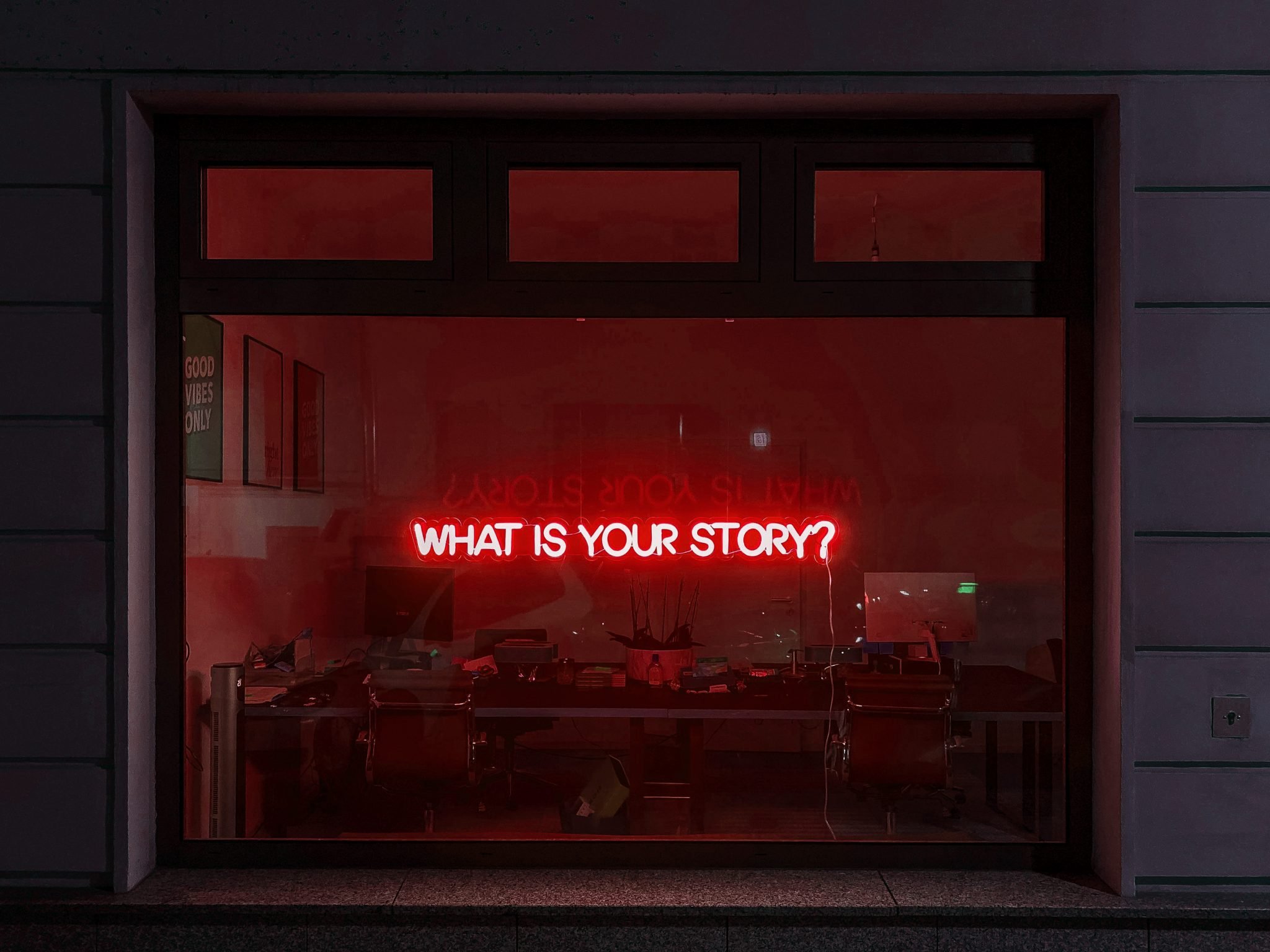The power of storytelling
5 TIPS TO MASTER YOUR STORY
2020 and 2021 saw a major shift in storytelling among ourselves and our audiences. Businesses have swapped the narrative from “here is this thing. Please click/look/purchase”, to “we’re all in this together.”
Suddenly we’re trying to come up with stories to explain this “new” world to our kids. Suddenly we’re challenged with no face-to-face interaction, so stories have become digital. Suddenly we find that we in fact have little to say at all…
Let me explain.
When we experienced those tiny windows of reprieve in 2021 where we were able to leave our houses and go out into the big wide world, I went to the pub to meet up with friends I hadn’t seen in months. The conversation came hot and fast, until suddenly it stopped.
“What have you been up to?”
“Nothing.”
“How’s work?”
“We’re closed.”
Insert long pause
“Watched anything new on Netflix?”
“Not really.”
I went home after an hour feeling a little adrift. Why? Because our brains are hardwired for stories to organise information and help us to orient ourselves. They help us make sense of this complex world. They make us feel connected with other people—like we’re sharing the same space, the same beliefs, the same emotions.
Without stories, we cannot transfer our lived experiences or gain understanding.
Intuitively, we all know the power of stories. They teach us what’s wrong and what’s right, who are heroes and who are villains, and how we ‘should’ feel.
SO WHY IS STORYTELLING THE FOUNDATION OF A SUCCESSFUL PR CAMPAIGN?
For many, genuinely connecting with an audience is the ultimate goal of public relations. That’s why storytelling is a communications trend with no end in sight, with skilled writers a vital part of any PR team.
When we see or hear a story, the neurons in our brain fire in the same patterns as the storyteller’s. That’s why when we hear an emotionally charged story, certain parts of our brain release excess dopamine, making it easier to remember something.
Also, as an audience listens to or reads a story, they put themselves in the protagonist’s shoes and areas of the brain will light up as if they are experiencing the story themselves.
In other words, storytelling is important to public relations strategies because it allows companies to better connect with their audience and ultimately inspire the audience’s feelings, ideas, and attitudes to align with their PR goals.
So how do we tell stories that resonate?
5 TIPS FOR SUCCESSFUL STORYTELLING
Evoke emotion
Stories that tap into our emotions are the ones we enjoy hearing (and reading) and the ones we remember. People are constantly making decisions based on how they feel. Understanding this will allow you to create stories that aim for the heart!
Visualise
Integrating visual tools can significantly enhance your story (I mean, who hasn’t cried over a random ad on TV or Instagram Reel? I do it daily). Videos, pictures, and animations can give you the edge when engaging with customers.
Get to know your audience
It’s not enough to know who a company’s target audience is on the surface (don’t say “my audience is everyone with money!”). You need to know what they listen to, read, and eat for breakfast. Understanding audience traits is key to telling a more resonant story and creating a relationship with long-term value.
Be Consistent
Once you’ve got your story down, stick to it. Changing your story too often will come across as insincere and will only leave your audience confused. Showing consistency—even if it’s as small as using the same colour scheme or font on all platforms—will create a better sense of brand awareness.
Be authentic
Consumers are savvy, and we know this. They’re able to spot when a brand is telling fibs or not being genuine. Sharing the stories of people who have actually used your product or service or highlighting your brand’s history are a few ways to improve the perception of your brand story authentically.
So next time you’re crafting a story, consider whether the message will convince an audience of a brand’s core message and convert them into fans of your brand, and perhaps—if you get it right—even brand promoters (who doesn’t want that?!).
Need that special ingredient to help tell your business’ story? Just add Sauce…
Amy Mahon
Account Executive

